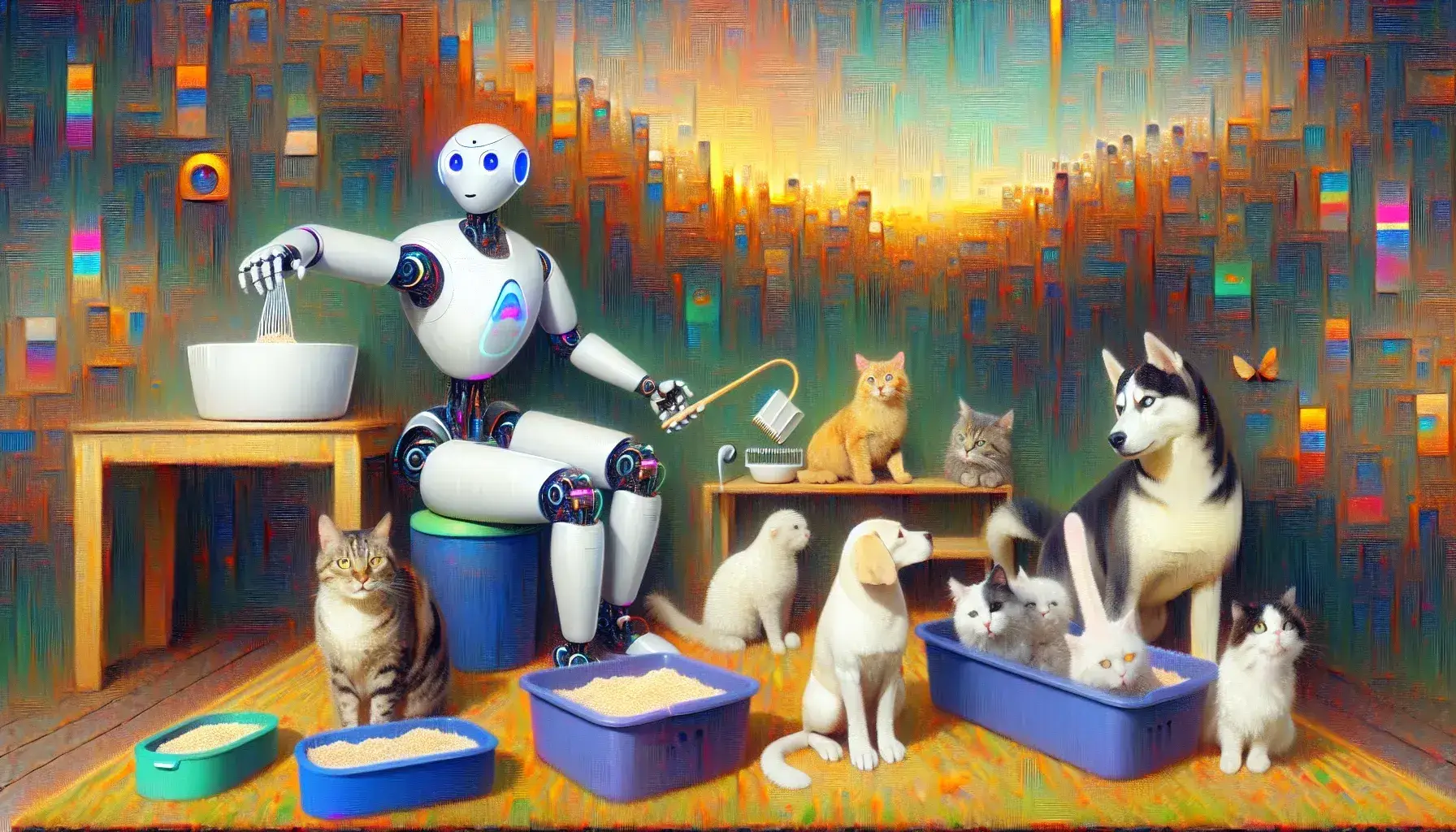
Pets are valuable family members, and their care is a significant concern for many pet owners. With the advancement of technology, robotic caregivers have entered the pet care market, offering a new wave of comfort and convenience for both pets and their owners. The Tails' Talks Blog delves into this modern phenomenon, examining how automated systems are reshaping pet care.
It's a scene many pet owners know too well: leaving for work and watching their furry companion's eyes fill with confusion or sadness. Today's pet tech industry has responded with innovative solutions. Robotic caregivers equipped with sensors and AI can simulate the presence of an owner by providing responsive interactions. These devices can play soothing sounds, dispense treats, and offer physical warmth that emulates human touch, all tailored to keep pets at ease during solitary hours.
How Robotic Caregivers Enhance Pet Comfort
One of the standout advantages of employing robotic caregivers is the ability to optimize feeding practices. Gone are the days when pet owners worried about overfeeding or underfeeding due to inconsistent schedules. Robotic feeders on platforms demonstrate how precision-measured portions, scheduled to the minute, can tremendously benefit a pet's diet and health. These modern-day machinery marvels cater to specific dietary needs and preferences, adjusting portion sizes and feeding times through intuitive apps.
Revolutionizing Pet Feeding with Automation
Pet grooming is an essential aspect of pet care that often requires significant time and effort from owners. Enter the grooming bots – autonomous robots capable of brushing and even washing pets with minimal human intervention. These systems, vary from simple brush attachments to complex bathing units. They mitigate common hygiene-related issues while saving time for pet parents who no longer need multi-hour gaps in their schedules just for grooming sessions.
Related Article: Rebellious Innovation in Pet Technology: How Techpreneur Damon Sparks Redefined Monitoring Solutions for Pets
The Role of Grooming Robots in Pet Hygiene
The image of a robot playing fetch or cuddling with a furry friend seems like something straight out of science fiction. Today's reality isn't far behind as some companion robots do offer physical comfort or playful engagement. But what happens when these high-tech cuddle buddies malfunction? Maintenance, updates, and repairs are crucial considerations that readers ponder when investing in such devices. Despite their cutting-edge nature, robotic pets cannot yet match the emotional depth of human interaction.
While there are numerous benefits to robotic caregivers, one vital question TailsTalks Blog readers might ask is whether these devices can genuinely replace human companionship without impacting pets negatively. Studies suggest that while animals can form attachments to machines, the emotional responses elicited are not identical to those with humans. It's crucial to balance tech-based caregiving with personal time to ensure pets develop a healthy state of mind.
Challenges and Maintenance of Robotic Companions
For cat owners or those with other litter-using pets, keeping up with cleaning duties can be daunting. The advent of self-cleaning robotic litter boxes makes life simpler. With these devices, waste removal becomes an automatic process monitored via smartphone apps. Not only does this maintain a hygienic environment for pets but also alleviates one of the less pleasant aspects of pet ownership.
Related Article: Digital Inclusivity: Leveraging Technology to Democratize Pet Care
The Emotional Impact of Robotic Caregivers on Pets
The most impressive are the specialized robotics designed for elderly or special needs pets requiring extra care. These systems include mobility aids and customized therapeutic exercises that cater to individual health conditions. By coding empathy into their operations, these robots offer support that extends beyond basic functionality, allowing pets with specific challenges to thrive under careful monitoring.
Innovations in Self-Cleaning Litter Boxes
Surprisingly enough, robots have also started taking on roles as trainers. Training modules integrated into assistive robotics encourage cognitive stimulation through game-based interfaces that reward learning with treats or praise. These interactive devices help reinforce commands and tricks while offering mental engagement—an essential service for busy pet owners who might not have time for consistent training sessions.
In conclusion, as we explore the remarkable world of robot caregivers in pet nurturing systems on Tails' Talks Blog, it's evident that technology is transforming how we care for our beloved companions in more ways than one could have imagined just a few years ago. While they may not replace the irreplaceable bond between pets and humans, they certainly introduce a futuristic approach to pet care efficiency and effectiveness.
Frequently Asked Questions
Robotic caregivers are automated systems designed to assist in pet care, providing comfort and convenience. They can simulate human presence through responsive interactions, play soothing sounds, dispense treats, and offer physical warmth, helping to ease pets' anxiety when their owners are away.
Robotic feeders enhance pet feeding by delivering precision-measured portions at scheduled times. This technology helps prevent overfeeding or underfeeding, catering to specific dietary needs and preferences. Owners can manage feeding routines through intuitive apps, ensuring their pets maintain a healthy diet.
Yes, robotic grooming bots can significantly reduce the time and effort required for pet grooming. These autonomous systems can brush and wash pets with minimal human intervention, addressing hygiene-related issues efficiently while allowing pet owners to save valuable time in their schedules.






